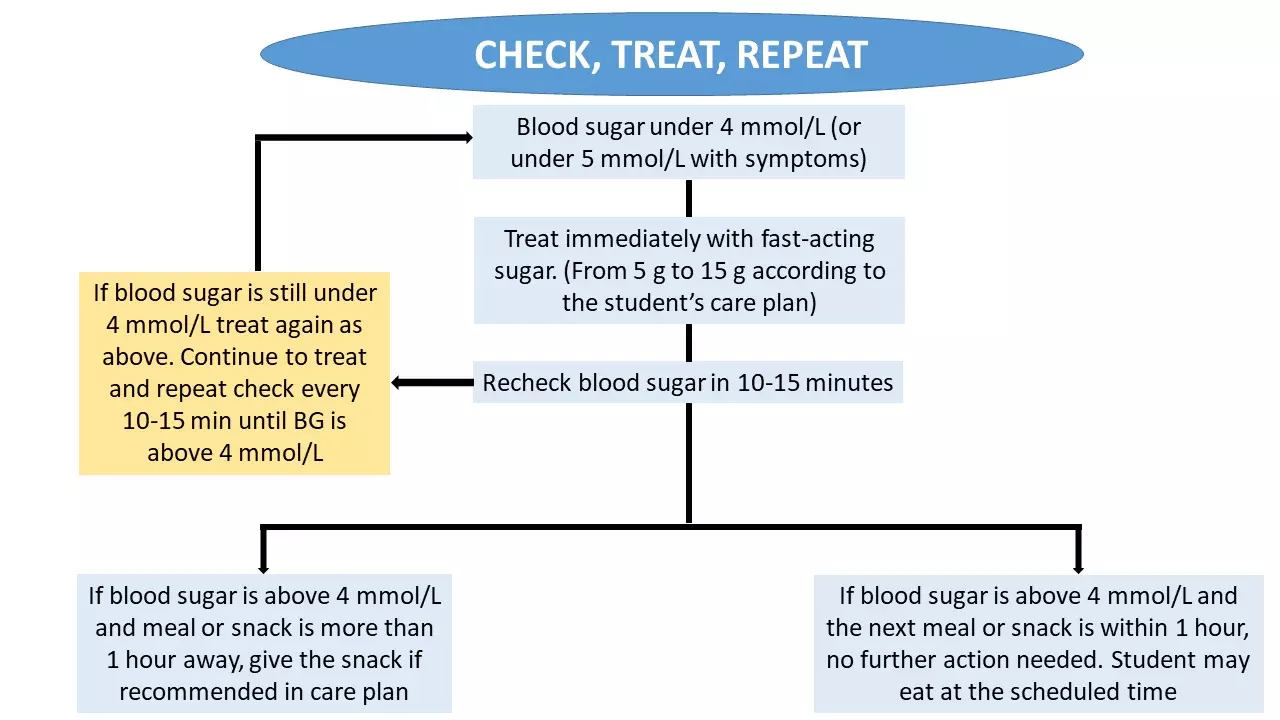
Low blood sugar: What it is, and what to do
Blood sugar is measured in millimoles per litre (or mmol/L).
A reading below 4 mmol/L is considered low blood sugar (hypoglycemia), and can be caused by:
- Too much insulin, and not enough food
- Delaying or missing a meal or a snack
- Not enough food before physical activity
- Unplanned physical activity, without adjusting food or insulin
All students with type 1 diabetes will have low blood sugar at school, typically at least once or twice a week. A low blood sugar reading is not cause for alarm but it must be treated without delay to ensure it doesn't develop into an emergency.
Some of the most common symptoms of low blood sugar are:
- Shakiness
- Sweating
- Hunger
- Confusion
- Irritability/grouchiness
- Blurry vision
- Weakness/fatigue
- Dizziness
- Headache
- Pale skin
Remember
It is important to catch low blood sugar early, and to treat it appropriately and immediately. Remember: Even a student who takes care of their diabetes independently may need help when they have low blood sugar.
How to help
- Low blood sugar must be treated IMMEDIATELY. Give fast-acting sugar according to the student’s care plan.
- DO NOT leave a student alone if you suspect low blood sugar
- Treat the low blood sugar WHERE IT OCCURS. Do not bring the student to another location. Walking may make blood sugar go even lower.
- Even students who are independent may need help when their blood sugar is low.

Remember: CGMs have alerts that indicate blood sugar levels are falling and may become low. These are often treated differently (with fewer carbohydrates) than when the blood sugar is low. See the student’s care plan for recommended action.
If a student experiences a low blood sugar before or during a test/exam, allow time to treat and recover. Because low blood sugar can affect how a person thinks and their brain needs time to recover, the student may need an additional 30 to 60 minutes to complete the task.
If mild low blood sugar is not treated, it can become severe. Very low blood sugar (when a person is unresponsive, unconscious, or having a seizure) is an emergency.
Source : Diabetes@school. diabetesatschool.ca © Canadian Paediatric Society
Last updated: